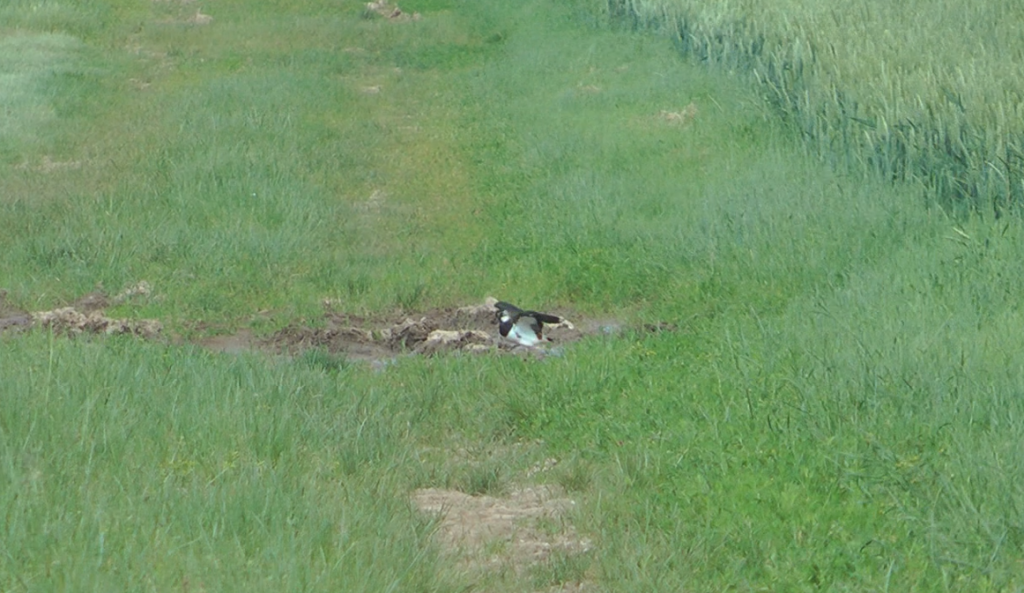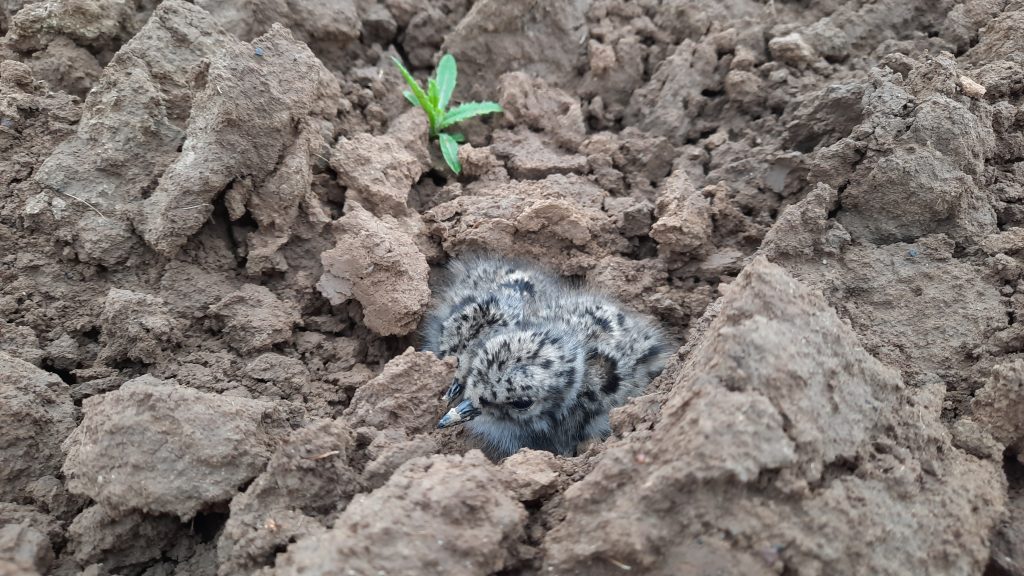Every Summer Semester, Ecotox Master students do a 2-month internship or AMEO (Applied Module at an External Organization). Today, Anne Hofmann tells us about her AMEO experience with the Northern Lapwing Project (Kiebitzprojekt) Rheinland-Pfalz at GNOR.
I did my AMEO with the “Kiebitzprojekt Rheinland-Pfalz” of the GNOR (Society for Nature Conservation and Ornithology of Rhineland-Palatinate), which is concerned with the protection of Northern Lapwings in our region.


Northern Lapwings are wading birds that originally inhabited wetlands and short grass meadows. The intensification of agriculture has led to a decline in lapwing populations across Europe due to habitat loss, a reduction in available food sources, disturbance from heavy machinery and increased predation pressure. Rhineland-Palatinate is in acute danger of losing the lapwing as a species. The lapwing project therefore monitors all remaining breeding pairs. The nests are marked to minimize the loss of clutches to machinery, and baskets or fences are used to prevent predation. In addition, a partnership has been established with Landau Zoo, where chicks are hatched and raised in a protected environment before being released into the wild.


My main task was to monitor the breeding lapwings around Landau, for which I rode my bike through the fields between Mörlheim and Herxheim, looking for signs of new clutches and checking previously marked clutches. I spent about 20% of my time digitizing my observations, thus allowing me to compare breeding success and population size over the years. I have also had some very interesting insights into the other parts of the lapwing project, spending a few days at the zoo and visiting the release aviary. In sum, I gained a lot of interesting insights from interacting with other project staff and volunteers.
In total, I did a little more than the equivalent of an eight-week full-time internship but spread over the breeding season from late March to early August, usually working for a few hours every other day. This gave me the very rewarding experience of observing the birds from their first mating flights until the chicks were able to fly. There were relatively few face-to-face meetings with my supervisor and much of the communication was by telephone and email. As I had previous experience with Northern Lapwings, this worked well for me, but for students new to bird monitoring it might be a bit challenging. The project will continue next year, building on the experience gained. They would be very happy to welcome other students next year, and there are several other GNOR projects focusing on different topics that might offer internships.
